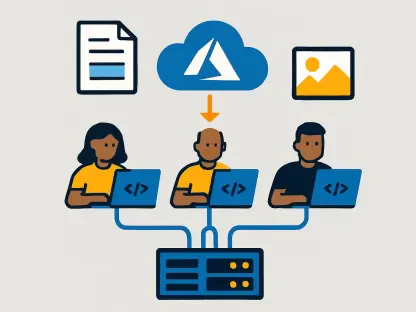In today’s fast-paced digital world, efficient data processing is crucial for maintaining a competitive advantage, particularly for enterprises handling settlement processes. Organizations often face the challenge of managing large settlement files arriving in varied formats such as zip files, Excel sheets, and database tables. Transitioning these files to a streamlined process using AWS Data Pipeline can significantly enhance operational efficiencies. This guide explores best practices for implementing AWS Data Pipeline to optimize the settlement process.
The Importance of Adopting Best Practices
Adopting best practices in managing settlement processes offers considerable advantages such as improved accuracy, operational efficiency, enhanced security, and cost savings. By following standardized procedures, organizations can reduce potential errors and ensure the consistent transformation of data for better decision-making. Incorporating proven methods not only minimizes risk but also supports scalable growth, preparing enterprises for increased data management demands.
Best Practices for Implementation
Automating Data Formats
Automating data format conversions represents a key element in streamlining settlement operations. Given the variety of incoming data formats, automation minimizes manual effort while ensuring data is processed uniformly. By converting diverse inputs to an efficient format like Parquet, data retrieval becomes faster and more coherent. For instance, integrating automation into the system allows zip files or Excel sheets to be seamlessly transformed, expediting the processing of each file received.
One case study exemplifies the benefits of automation: a financial institution integrated automated data formatting, reducing processing times by 60%. This transformation allowed staff to redirect efforts from data preparation to more strategic operations, enhancing overall productivity.
Utilizing AWS Cloud-native Services
Leveraging AWS cloud-native services in the automation process is another powerful best practice. With elements like AWS Glue, Lambda, and DynamoDB, processes become more cohesive and streamlined. AWS Glue ETL services orchestrate the transformation and migration of data, ensuring each step aligns with the overarching business logic. Meanwhile, Lambda functions automate crucial tasks like unzipping files and initiating processes, reducing the chance of human error.
In a practical example, an organization centered its settlement process on AWS services, employing S3 layers and running ETL Glue jobs. This methodology led to a dramatic decrease in data lag times, boosting both internal and external data accessibility. The system’s adaptability made it easier to introduce new data sources and formats, reinforcing the infrastructure’s scalability.
Future Considerations and Practical Insights
Implementing AWS Data Pipeline offers a significant boost in processing capabilities, providing a robust solution for enhancing settlement operations. Applying these best practices can substantially improve data accuracy and processing speeds, making it an appealing option for companies managing extensive data volumes.
Organizations should consider adopting these methods to maintain a competitive edge and manage operational tasks more effectively. The advances in AWS services pave the way for future improvements, allowing for ongoing enhancement of data management systems. The use of these cloud-native services results in not only optimized settlement processes but also a comprehensive data strategy that can evolve with advancing technology.









